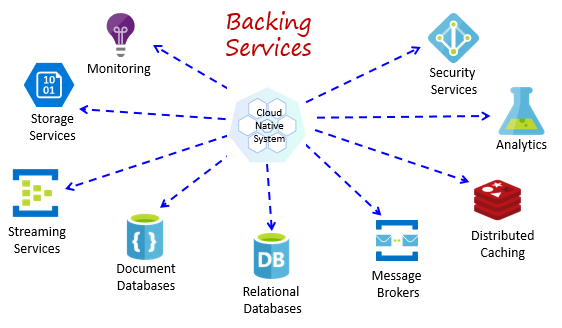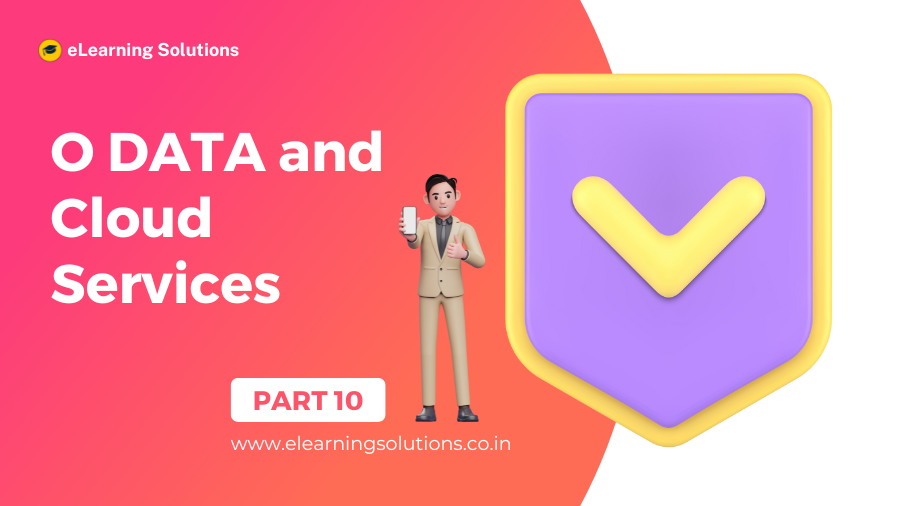Introduction to O DATA and Cloud Services
The convergence of O DATA and cloud services has revolutionized the way organizations handle data and build applications. O DATA, the Open Data Protocol, provides a standardized way to create Web APIs for data exchange, while cloud services offer scalable and flexible computing resources. This article explores the powerful combination of O DATA and cloud services, shedding light on their seamless integration and the numerous advantages they offer.

Cloud Storage as O DATA Data Sources
Cloud storage providers such as Amazon S3, Microsoft Azure Blob Storage, and Google Cloud Storage serve as excellent data sources for O DATA services. These cloud storage platforms offer reliable, secure, and scalable storage solutions for vast amounts of data. By integrating O DATA with cloud storage, organizations can expose cloud-based data through standardized O DATA APIs, making it accessible to a wide range of applications and clients.
Support for Big Data and Data Lakes
Many cloud providers offer specialized services for big data processing and data lakes, such as Amazon S3 and AWS Glue, Azure Data Lake Storage, and Google Cloud Data Lake. O DATA can seamlessly interact with these data lakes, allowing businesses to leverage O DATA’s query capabilities to explore and analyze massive datasets stored in the cloud. This integration enables data-driven decision-making and insights generation on a massive scale.
2. Integrating O DATA in Cloud Applications
Building Cloud-Native O DATA Services

With the flexibility of services, organizations can develop cloud-native O DATA services tailored to their specific needs. Cloud-native services are designed to take advantage of cloud resources, auto-scaling, and microservices architecture. These O DATA services can easily handle varying workloads and accommodate growing data demands, ensuring optimal performance and cost-efficiency.
Integration with Serverless Architecture

Serverless computing allows organizations to run code without managing servers explicitly. Integrating O DATA with serverless architecture, such as AWS Lambda, Azure Functions, or Google Cloud Functions, enables automatic scaling of O DATA services based on incoming requests. This pay-as-you-go model optimizes resource utilization and reduces operational overhead, making it an attractive option for cost-effective and efficient O DATA deployments.
3. Benefits and Challenges of O DATA in the Cloud
Benefits of O DATA in the Cloud
-
- Scalability:It provide scalable infrastructure, allowing O DATA services to handle growing amounts of data and users seamlessly.
-
- Flexibility: Cloud-based O DATA services can be easily adapted to changing business requirements and quickly deployed across multiple regions.
-
- Global Accessibility: O DATA APIs hosted in the cloud can be accessed from anywhere, enabling global access to data and services.
-
- Cost-Effectiveness: Cloud-based deployments often follow a pay-as-you-go model, optimizing costs based on actual usage and reducing upfront investment.
Challenges of O DATA in the Cloud
-
- Security Concerns: It require robust security measures to protect data from unauthorized access or breaches.
-
- Data Compliance: Organizations must ensure compliance with data regulations and consider data residency requirements when deploying O DATA services in the cloud.
-
- Performance Considerations: While services offer scalability, latency issues may arise when dealing with large datasets or real-time data processing.
Conclusion
O DATA and services form a powerful alliance that enables organizations to build scalable, flexible, and data-driven applications. By leveraging cloud storage providers and embracing cloud-native and serverless architectures, businesses can take full advantage of O DATA’s capabilities in the cloud. While there are challenges to address, the benefits of using O DATA in the cloud far outweigh the hurdles, making this combination an essential strategy for modern data-centric applications.
FAQs (Frequently Asked Questions)
-
-
- Can O DATA be integrated with multiple cloud providers simultaneously? Yes, O DATA is flexible and can be integrated with multiple cloud providers simultaneously. This allows organizations to choose the most suitable services for their specific needs.
-
- What is the impact of data latency in cloud-based O DATA services? Data latency can affect real-time data processing and user experience in cloud-based O DATA services. Organizations should consider data locality and implement caching mechanisms to mitigate latency issues.
-
- How can organizations ensure data security in cloud-based O DATA deployments? To ensure data security, organizations should follow best practices such as data encryption, access controls, and regular security audits. Additionally, choosing reputable cloud providers with robust security features is crucial.
Bonus: Be an Certified Professional in SAP WM (Warehouse Management)
PART-9
PART-11
Find Your Preferred Courses
SAP SD (Sales and Distribution) is a module in the SAP ERP (Enterprise Resource Planning) system that handles all aspects of sales and distribution processes. S4 HANA is the latest version of SAP’s ERP suite, built on the SAP HANA in-memory database platform. It provides real-time data processing capabilities, improved…
SAP Human Capital Management (SAP HCM) is an important module in SAP. It is also known as SAP Human Resource Management System (SAP HRMS) or SAP Human Resource (HR). SAP HR software allows you to automate record-keeping processes. It is an ideal framework for the HR department to take advantage…
I am text block. Click edit button to change this text. Lorem ipsum dolor sit amet, consectetur adipiscing elit. Ut elit tellus, luctus nec ullamcorper mattis, pulvinar dapibus leo.
Salesforce Developer Training Overview Salesforce Developer training advances your skills and knowledge in building custom applications on the Salesforce platform using the programming capabilities of Apex code and the Visualforce UI framework. It covers all the fundamentals of application development through real-time projects and utilizes cases to help you clear…
SAP EWM stands for Extended Warehouse Management. It is a best-of-breed WMS Warehouse Management System product offered by SAP. It was first released in 2007 as a part of SAP SCM meaning Supply Chain Management suite, but in subsequent releases, it was offered as a stand-alone product. The latest version…
Oracle PL-SQL is actually the number one database. The demand in market is growing equally with the value of the database. It has become necessary for the Oracle PL-SQL certification to get the right job. eLearning Solutions is one of the renowned institutes for Oracle PL-SQL in Pune. We believe…
Course details for Pega Training in Pune Elearning solution is the best PEGA training institute in Pune. PEGA is one of the Business Process Management tool (BPM), its development is based on Java and OOP concepts. The PAGA technology is mainly used to improve business purposes and cost reduction. PEGA…
SAP PP Training Institute in Pune SAP PP training (Production Planning) is one of the largest functional modules in SAP. This module mainly deals with the production process like capacity planning, Master production scheduling, Material requirement planning shop floor, etc. The PP module of SAP takes care of the Master…
SAP BASIS Module Course Content (1) Hardware and Software Introduction (i) Hardware (a) Hardware Introduction (b) Architecture of different Hardware devices (ii) Software (a) Software Introduction (b) Languages and Software Development (c) Introduction to OS (d) Types of OS (iii) Database Concepts (a) Introduction (b) Database Architecture and concepts (c)…
Curriculum Details SAP HANA Administration SAP HANA Introduction SAP HANA Introduction SAP HANA Information Sources Installation Preparation SAP HANA Sizing Linux Operating system requirements SAP HANA Installation Introduction to SAP HANA Lifecycle Management tools Describing Advanced Installation options Explaining a Distributed system SAP HANA Architecture SAP HANA Architecture and Technology…
Business Warehouse (BW) is SAP’s data warehousing application; it uses an SAP NetWeaver application server, but can run on many different databases. Improvements come with each version of Courses for sap BW on HANA training, but a really big jump in functionality comes when SAP BW is installed on the…
SAP SAP HANA simple logistics is also known as HANA enterprise management. Different area of business is combined in this suit itself like HANA enterprise-management helps in faster and efficient processing of business data in the area of logistics, supply chain, procurement, user experience, sales, partner management. So Course for…
ABAP remains a key language as many SAP business applications and custom developments are written in ABAP, with Courses for sap ABAP on HANA training there are numerous improvements. The ABAP language, which allows writing streamlined ABAP code and benefit from SAP HANA. SAP HANA is a relational DBMS in SAP…
SAP HANA is the latest ERP Solution from SAP, which is a combination of Hardware and Software. HANA has unprecedented adoption by the SAP customers. courses for SAP HANA training institutes. SAP HANA is the latest, in-memory database, and platform which can be deployed on-premises or cloud. SAP HANA is a…
Oracle Applications R12 HRMS is one of the most demanded applications by most organizations. It is the core application possess by the ERP system. The core objective of the organization to implement Oracle R12 HRMS is to organize the entire activates of human resources management. An Elearning solution is well…
Elearning solutions provide training suit for Oracle Apps R12 SCM with training from industry experts. The organizations are adopting Oracle’s supply chain management cloud as they deliver the insights, visibility, and capabilities for organizations’ management. Oracle Apps R12 SCM allows the industry to create own intelligent supply chain. Hence, it…
Oracle Apps R12 Technical Course Elearning solutions is the best Oracle Apps R12 technical course in Pune owned by well trained and certified trainers. The training is conducted by the best experienced IT professionals with skilled resources. The course structure is based on the real-time scenario so that it will…

₹25,000.00
Elearning solutions is the best SAP FICO training institute in Pune. SAP FICO is the Finance and Cost controlling module is one of the most important and widely used SAP ERP modules among organizations. As it is very robust and encounter almost all the business processes. In SAP FICO, FI…
Elearning solutions provide SAP SD training. The tutorials are designed for the students who desired to understand SAP SD concepts and implement them in practice. The SAP SD training is delivered by industry experts, who are aware of the real-time scenarios. Hence, supporting students understand, what will be there on…
SAP WM training is offered by Elearning solutions provides 100% hands-on practical classes. The primary focus of training is getting placement for all the students. The tutorials are designed for the students who wished to work on live projects for the organizations. The syllabus of SAP WM training is crafted…
Elearning solutions are the best SAP MM training institute in Pune. SAP MM (material management system) is one of the important models of the SAP ERP system, which is particularly designed for business processes. SAP MM deals with the entire material and inventory management of the organization. The module is…
Elearning Solutions best SAP ABAP training institute in Pune provides real-time training for students. SAP ABAP (Advanced Business Application Programming) is a programming language for building SAP applications such as SAP R/3 which runs in the SAP ABAP runtime environment. (SAP ABAP online course) SAP ABAP is used by organizations…







 WhatsApp us
WhatsApp us